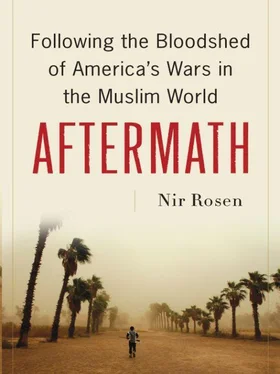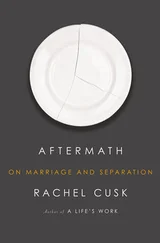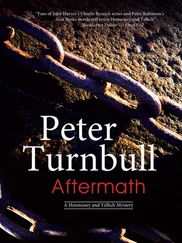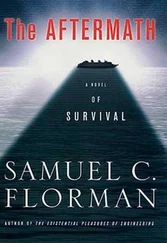This book is not limited to Iraq, however. This is a book about what the Americans have wrought regionally, how the invasion and its aftereffects have spilled over into neighboring countries. It shows how Iraq underwent a process of Lebanonization and how the Middle East, in many ways, was Iraqified. I attempt to chart where Iraqi refugees fled to and how they lived. I also look at the effect of this Iraqi exodus: the radicalization and destabilization of Iraq’s neighbors, the exodus of ideas, weapons, and tactics from Iraq. In particular I focus on Lebanon and the extent to which it was Iraqified, with an Al Qaeda-inspired group leaving Iraq and establishing itself there at the same time as tensions between Lebanon’s Sunnis and Shiites led to clashes in its streets. The regional tensions between Sunnis and Shiites stoked by the Bush administration remain a legacy that can lead to future violence. The book ends in Afghanistan, a “virtual” neighbor of Iraq’s, where President Barack Obama, who inherited a more broken and unstable Middle East, initiated his own surge and where the American military tried to apply the lessons it thought it had learned in Iraq. COIN—the acronym for the counterinsurgency warfare in vogue after the “surge” in Iraq—is talked about as a war of the future, and its use and efficacy in Iraq and Afghanistan will determine the way America fights those future wars. As I write there is talk in Washington about whether American troops should be used to “solve” Iran, Pakistan, Yemen, or Somalia. Regardless of where, there is a certainty that they will be used again. This book, then, as well as being a personal journey through the violence that has cascaded through the region over the last decade, is a reminder of the human cost of America’s wars to remake the Muslim world.
CHAPTER TWO
Road to Civil War
ALTHOUGH MANY SEE THE FEBRUARY 2006 SAMARRA SHRINE BOMBINGS by Al Qaeda in Iraq as the incident that ignited the civil war, ethnic and sectarian militias had been battling each other long before that. Since the invasion the lives of many Iraqis had become restricted to their small neighborhoods, with travel too treacherous to attempt. These neighborhoods became “purified” of minorities; mini-cities made up of a single sect or ethnic group were set up. Those conditions shaped the political consciousness of Iraqis; they became increasingly isolated, with no public spaces for debate or interaction. Even the new media in Iraq was segmented, with each institution targeting specific sections of Iraqi society. As a result, Iraqis stopped watching the same news, following the same issues, or even watching the same TV shows.
New parties emerged in postinvasion Iraq, and old ones resurfaced. Others formed new electoral coalitions. Most of this activity revolved around identity politics. Very few Iraqis voted for nonsectarian parties in any of the postwar elections, and most political groupings saw their main function as the “representation” of sectarian and ethnic groups rather than the proposition of ideas and projects for the future of the state. Identity was politicized and confessionalized, much as it is in Lebanese politics, in a manner unseen since the creation of Iraq.
The debates since the invasion pertained to the design of power-sharing formulas that represented the different communities. To newcomers this may have seemed like the true nature of Iraqi society, which many presented as three self-contained “nations.” But this simplified the concept of Iraqi identity and reduced it to a sectarian one. In the American view, the only way through which Shiites observed their surroundings was through their sectarian identity, and they participated in Iraqi politics only through their Shiism.
Sectarianism has always existed in Iraq, just as racism exists in every society. But pre-American invasion sectarianism was very complex. Since the capture of Mesopotamia (then compromising the provinces of Baghdad and Basra) by the Ottoman Turks in 1638, minority Sunnis had been Iraq’s ruling group. Following the dissolution of the Ottoman Empire, the British Mandate authority further empowered Sunnis in Iraq while Shiites remained mostly rural and confined to the laboring classes. By the 1950s many Shiites had migrated to urban areas; some filling the vacuum created by the departure of Baghdad’s Jewish commercial class, others working in the government. Sunnis and Shiites intermarried, and typically the father’s sect would become the dominant one in the family.
Sectarianism existed before the war; it was just muted and not very important politically. But it could always be used as an alternative interpretation of events as well. Abdul Karim Qasim, who led Iraq after the monarchy was overthrown in 1958, increased the numbers of Shiites in the officer corps. Some Shiites believe he was overthrown by Sunni officers in 1963 because of that, since afterward Shiite attendance in the military academy declined. The regime that followed also expropriated some Shiite businesses. But politics in 1950s and ’60s Iraq was broadly aligned around ideological, not sectarian, fault lines, inspired by Nasser’s secular Arab socialist state in Egypt. The 1968 coup that brought the Baath Party to power, dubbed the “White Revolution,” got most of its legitimacy from its promise of stability and an end to the retributions and political violence that had scarred Iraqi society. Saddam, who participated in the coup and rose to the top of the military and government throughout the ’70s, officially took power in 1979. For a long time his approach to ruling was not sectarian. Although most neighborhoods in Baghdad had a clear sectarian majority, Saddam tried to prevent the emergence of “pure” areas in the city. The government regulated access to the city, and moving into Baghdad required the government’s permission. In the early 1980s, when plans were made to modernize the city, the government planned many neighborhoods to accommodate specific professions (military officers, teachers, professors, engineers, etc.) in order to assure that they were mixed. Most of these areas have now been rendered homogenous because of the violence and mass expulsions. The same applies to the government’s plans for social engineering (moving Arabs into the north and Kurds into the south). Internal displacement is a grave obstacle to peace in Iraq today.
During the ’70s the Baath Party, though not without sectarian bias, was focused on using its oil wealth for modernizing Iraq and building the Iraqi state. As Saddam accumulated more power it was often at the expense of rival Sunnis. Initially loyalty and competence were sufficient to advance in his regime. Saddam weakened ideological parties like the Communists but backed religious and tribal leaders who supported his regime.
But the Iran-Iraq War increased regional sectarianism. Arab states like Saudi Arabia expected Iraq to be a Sunni bulwark against Shiite Iran. The war created the first real fissures between Sunnis and Shiites in Iraq. Some Shiite Baathists in the intelligence and security establishment and presidential palace began to feel marginalized and mistrusted, even targeted. Some who defected complained about this to Dawa Party officials in London, but the officials weren’t sure if the complaints were valid or just an attempt to penetrate the party. “If the Iran-Iraq War had only lasted one or two years, it wouldn’t have had an impact,” a Dawa insider and longtime official told me. “But it lasted eight years.” And the war was followed by the 1991 intifada, which was not Shiite at first—it grabbed anything around it to give it an identity, and Imam Hussein’s “revolution” against oppression resonated in the south. Saddam crushed the intifada, treating it as if it were a Shiite uprising. His brutal suppression was led by a Shiite, Muhammad Hamza al-Zubaidi, but Shiites would feel that a Sunni regime had punished them, and they would harbor these grievances following Saddam’s overthrow.
Читать дальше











